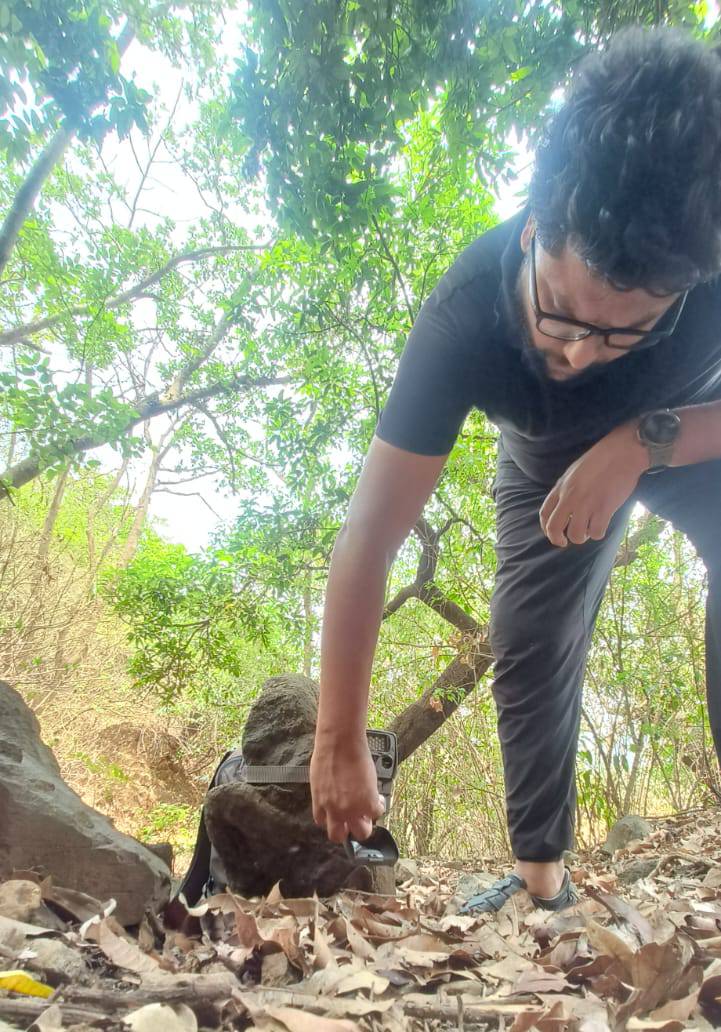
Conservation & Eco-restoration
The Shillim Institute is a bastion for nature conservation, cultural heritage, and ecosystem restoration in the Western Ghats. Guided by expert recommendations, we champion indigenous plant preservation, soil erosion prevention, and raising groundwater levels.
Our conservation initiatives encompass an array of activities, from tree plantation drives with native saplings to the construction of watershed structures like gully plugs, stone bunds, percolation ponds, and stone lines. The Institute's commitment to moisture conservation involves creating percolation ponds, encouraging the natural growth of grass, and undertaking strategic plantation efforts. Vegetation management practices, including local seed dispersal, hardy tree planting, and invasive species removal, further contribute to the ecosystem's health. Habitat development initiatives include stone, log, and bush pilings, alongside the creation of perches and hedges.
Plantation Drives
The Institute has successfully transformed land use, enlisted local communities as forest guards, and introduced thousands of native plant species, resulting in the flourishing of over a million trees comprising 64 diverse species. Species specific to the Northern Western Ghats were incorporated to enhance biodiversity. These strategically planted trees offer shade, attract birds and pollinators, and bear fruit, contributing significantly to the overall biodiversity of the Shillim micro-catchment. Additionally, we have planted 461 rare and endemic species in forest areas and sacred groves, contributing to their conservation.


Camera Trapping
We place camera traps along noted corridors and paths in strategic areas within the Shillim forests as a proactive step toward wildlife monitoring and research. These devices enable non-invasive observation of wildlife, providing valuable insights for ongoing studies. By capturing images and videos of animals in their natural habitat, we can identify species, estimate populations, study behaviors, track movements, and detect rare or endangered species. This approach minimizes disturbance to the animals while yielding essential data for conservation efforts and biodiversity management.
Native Nursery
Deforestation for agricultural and developmental purposes presents a significant challenge through the loss of endemic and native trees and shrubs that are finely adapted to local climates, soils, and environmental conditions, rendering them resilient to regional adversities such as extreme weather and pests. The Shillim Institute has established a native plant nursery as part of an intensive approach towards eco-restoration and conservation. The primary goal is to advocate for the incorporation of these indigenous species in landscaping initiatives and village environments along the peripheries of fields and in open patches of scrub . Native plants require less water, fertilizer, and maintenance compared to non-native varieties, thereby conserving resources. Furthermore, their cultivation contributes to the preservation of genetic diversity among indigenous plant species.
Forest guards and nursery staff have meticulously gathered seeds throughout the seasons, planting and nurturing saplings. Once these saplings reach a certain height, we will distribute them to local villages, supporting their care during the crucial first year of growth.



Water Conservation
The Western Ghats, renowned for its heavy monsoon rains and steep slopes, grapples with a significant challenge: soil erosion. The rugged terrain, coupled with intense rainfall, triggers water runoff and erosion, leading to the loss of valuable topsoil. Human activities such as deforestation for agriculture, logging, and infrastructure development exacerbate this problem by stripping away protective vegetation, making the exposed soil susceptible to erosion. This underscores the intricate interplay between natural phenomena and human interventions in the degradation of soil in the Western Ghats.
We construct close to 80 stone bunds in deep gullies each year, accompanied by the establishment of multiple stone lines on slopes, and carried out successful tree planting initiatives in retreat gaps and restoration areas across both dwarf and tall canopy regions.
A government-sponsored scheme undertaken approximately 20-25 years ago involved the construction of an earthen dam. Recently, the dam underwent desiltation to remove accumulated silt hindering rainwater percolation. Desiltation has resulted in increased water storage capacity within the dam, consequently extending the duration of water availability.
Forest Protection
Protecting forests involves a complex interplay between human activities, land use, and the well-being of the forest itself. Initially, we faced challenges such as grazing, trampling, tribal entry for non-timber forest products (NTFP) collection, fire risks, low germination rates, erosions in streams, exposed roots, gully formation, and soil organic matter deficiency. These threats compromised ecological integrity and biodiversity, requiring comprehensive conservation measures.
The success of our forest conservation program hinges on several key initiatives. Transitioning land use from shifting cultivation to protected areas has transformed landscapes from 'open grassland – scrub' to thriving 'dwarf canopy' vegetation. Local community engagement is crucial, with residents serving as forest guards, fostering economic growth and a sense of stewardship. Annual planting of native species enhances biodiversity, while preserving semi-evergreen forest patches bolsters overall ecological well-being.
Strategic soil conservation efforts, such as stone bunds, mitigate erosion risks. Currently, the stone bunds in deep gullies and stone lines on slopes are maintained, with additional structures added annually. Controlled burning and fireline creation safeguard the forest from illegal fires and forest fires. The success of our program is evident through the presence of animal corridors and indicator species like the Indian Gaur, Sambhar, and Malabar Giant Squirrel.
Recognizing the time required to reach the climax stage of semi-evergreen forests, our program is committed to ongoing restoration efforts and has fostered a thriving and resilient ecosystem.

